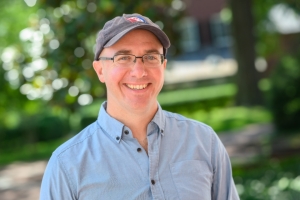
Office Space: Jay Margalus Jay Margalus, Johnson Professor of Entrepreneurship and Leadership and director of the Connolly Center for Entrepreneurship, offers us an office tour.
Jay Margalus, Johnson Professor of Entrepreneurship and Leadership and director of the Connolly Center for Entrepreneurship, is enjoying his current office space in Hopkins House on Nelson Street as he awaits the move into a new office in the renovated Williams School. He recently welcomed a writer and photographer from W&L’s Office of Communications and Public Affairs to his office to be our first subject in a new series called “Office Space,” where faculty give us a tour of items of interest in their office in their own words and share how their spaces reflect their personalities, interests and approach to relating to their students.
Margalus began his work at W&L in July 2023 after serving as the faculty director of maker innovation at DePaul University’s Idea Realization Labs. He holds a Master of Science with distinction in human-computer interaction from DePaul University, a Bachelor of Science in political science from North Central College and various design certifications from Cornell University, Massachusetts Institute of Technology and Harvard University. He teaches courses in entrepreneurship and design thinking.
Conference badges
“These are conference badges — at least, that’s the boring way to put it. The more exciting way to put it is that each one of these is a custom-designed, handheld videogame or computer game console. Most of them were made for a hacker conference in Chicago I’ve attended for years. I work with a small team to do everything from designing the actual hardware for the badges to writing and designing the games that go on them and then writing the firmware or the code that makes the games run. We make about 2,000 of them every year. They all do different things.
“This one [second from right] was the first one that we made for a conference called Big Data Everywhere. When one badge entered the conference, there was a ‘virus’ on it, and then as the badge came close to other badges — it’s both a transmitter and a receiver — it transmitted the virus. Then, we visualized the virus transmission in real time. The funny thing about that was that at a conference, you’re supposed to talk to people, but the people who were actually playing the game were avoiding other people at the conference. I like doing things that are a little subversive like that.”
Daughter’s prototype
“My daughter made her own tablet, computer and phone out of paper. We talk about paper prototyping in my Design and Entrepreneurship class. You teach people to start with low fidelity, right? You get committed to things when you’re doing higher fidelity stuff, because it takes longer to execute. And once you get committed to a thing, you’re very unlikely to want to change it, even if people don’t like it. So you start with paper. This is my reminder to my students that kids are often better at prototyping than college students. I tell them if my daughter can do this in 10 minutes at the age of 8, you can, too.”
Desk doodles
“I keep a roll of butcher paper on my desk that I continually tear off and fill up with drawings as I’m working on a problem or trying to explain something to a student. … Tim Ingold has a great book called ‘The Life of Lines.’ The idea is that a line is constantly in the state of becoming, so when you’re drawing, you’re projecting what’s in your mind on paper. If you’re drawing, you’re actually listening to the material. He says that when you draw, it’s just externalizing that state of becoming. It’s your thought manifesting itself.”
Wing divider
“I’ve been thinking a lot about proportion lately. Furniture makers used to use these wing dividers to measure out furniture proportionally, as opposed to using units of measurement. How do you describe something of value if it can’t be measured? One way is by describing it in proportion or relation to other things. Proportions also typically measure musical notes — quarter notes, half notes, full notes — and how those notes work together with each other. So, because furniture built with proportions mirrors something that we recognize, like music, it’s seen as similarly beautiful.
“In quantum mechanics, there are no discrete units of things. Things are manifested in relation, so relationships are the most important things. The idea of proportion and relationship transcends furniture and music. It’s woven into every sound, into everything. How do you describe this to students? I’m teaching a class this Spring Term with [associate professor of business administration] Jeff Schatten, and we hope to impress upon the students that we want to find a way to measure their learning in the class that is not just focused on grades. I forget what the paradox is called, but it says the measure is not the target. The second you make a measurement into your target or goal, it actually fundamentally ruins the measurement. I think that emphasis on making the measure the target is probably ruining everything that’s actually beautiful [in their learning experience].”
Kickstarter game
“This is a game made by some former students of mine at DePaul University. They actually Kickstarted it successfully. It came out of a course I taught called The Business of Indie Games. We had over a dozen student groups successfully fund their projects on Kickstarter from that class. It’s an example of students taking the things that we taught them in that course and applying them to a real-life project that actually brought in funds. That’s what I want to see more of our students do here, too. Do a thing, but then also put it out there.
“There’s a learning framework called constructionism that says that we learn best when we manifest our thoughts in the real world, and even more so when we share those thoughts with other people. It’s the difference between playing guitar in your bedroom and playing guitar in front of an audience. There’s something additional you learn not just by doing a thing but by also doing it in front of people.”
Banner
“I find that this is a recurring theme with students as we talk through independent studies or ideas they come up with in class. You don’t really know how much work an idea is going to take to execute until you dive in, and then you have to decide if you’re going to keep going.”
Podcast equipment
“My podcast is called This Should Work*. The asterisk makes it funnier and drives the point home, I think. When I first learned to program, I had this guy who was mentoring me, and I would ask him, ‘Can I do this? Should I do this?’ And at one point he said, ‘What’s the worst that could happen? It’s just a computer.’ That’s what I try to tell my students. In the last season, I interviewed people who create innovation spaces. I then fed all their transcripts into an AI model and trained it so that you can talk to the model about designing innovation ecosystems. The first season was about makers. I have to decide what I want the next season to be about.”
Badges
“One of these is from a bike ride across Iowa that I do every year. One is from the Apple Cider Century, which is what it sounds like — a 100-mile bike ride across Michigan. I’m certified to lead backpacking trips through the Sierra Club, and a couple of these are from backpacking trips I’ve led.
“Cycling, backpacking and other outdoor activities are a great reminder that you are not in control. There’s nothing you can control when you’re outdoors. You have to learn to work with what’s happening, rather than try to force what you want to happen on things.”
If you know any W&L faculty who would be great profile subjects, tell us about them! Nominate them for a web profile.
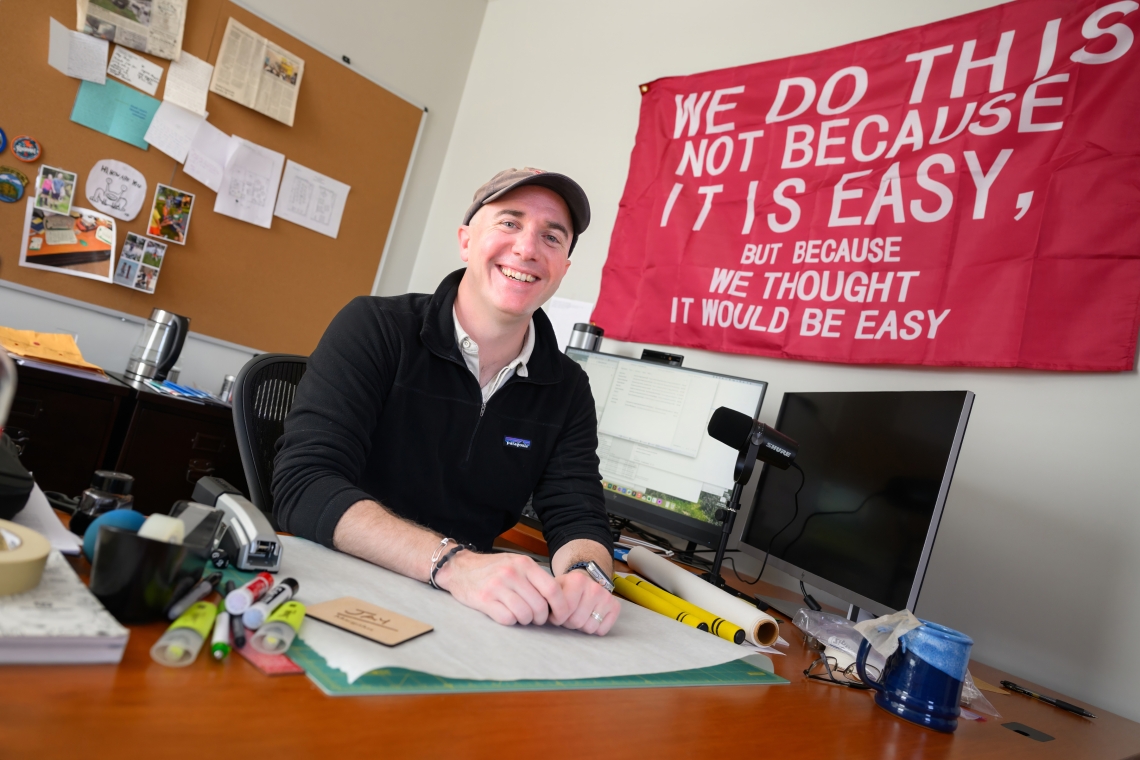 Jay Margalus, Johnson Professor of Entrepreneurship and Leadership and director of the Connolly Center for Entrepreneurship, in his office in Hopkins House
Jay Margalus, Johnson Professor of Entrepreneurship and Leadership and director of the Connolly Center for Entrepreneurship, in his office in Hopkins House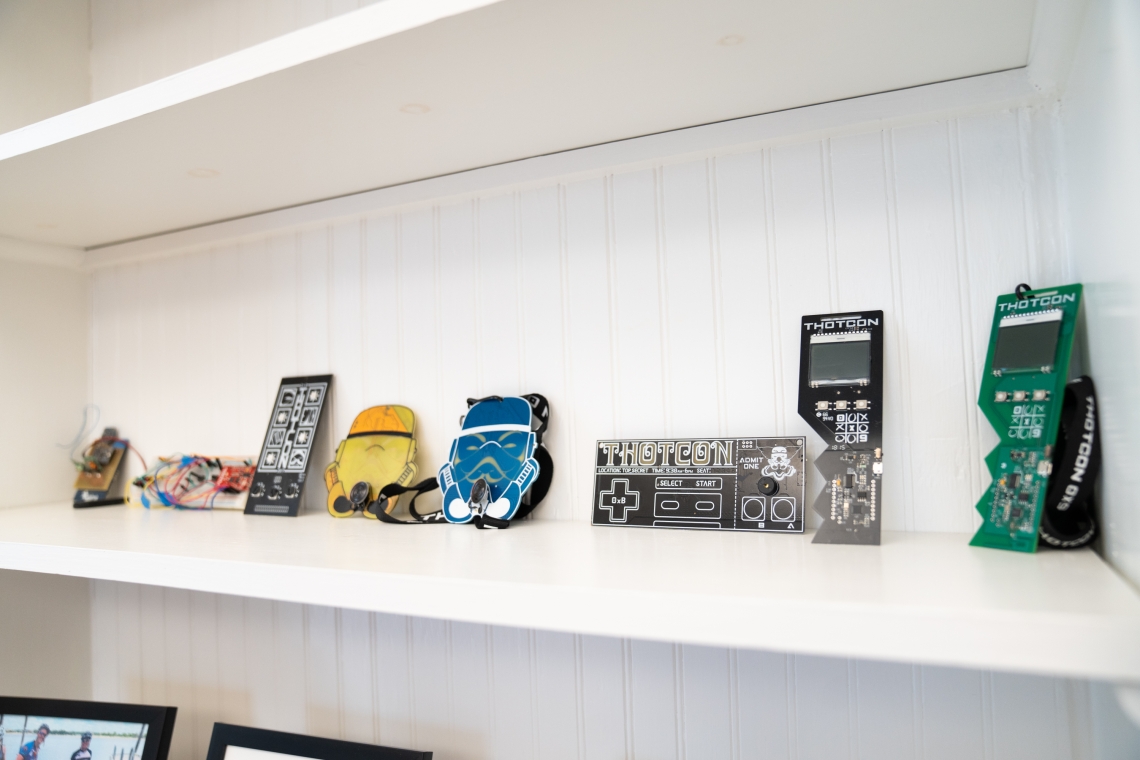 Margalus has a collection of conference badges he has designed over the years.
Margalus has a collection of conference badges he has designed over the years.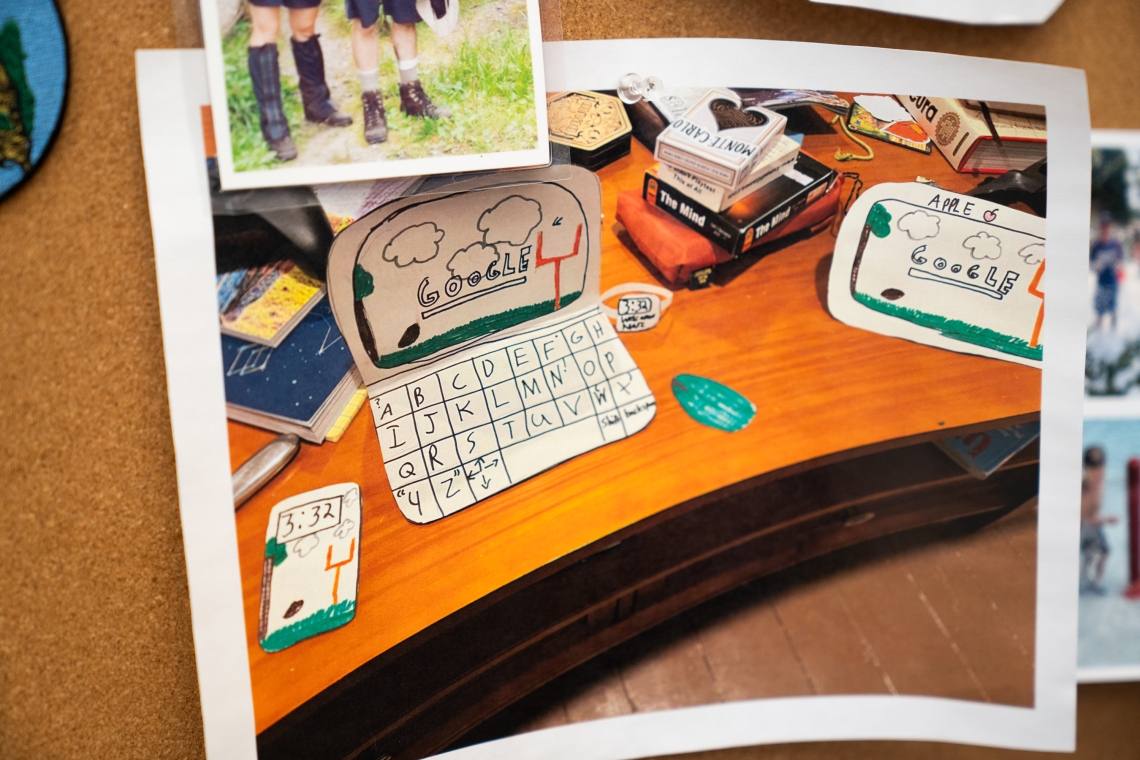 A prototype of a computer and iPad by Margalus’ daughter is pinned to a corkboard on his wall.
A prototype of a computer and iPad by Margalus’ daughter is pinned to a corkboard on his wall. Margalus keeps doodle paper handy at his desk for when inspiration hits.
Margalus keeps doodle paper handy at his desk for when inspiration hits.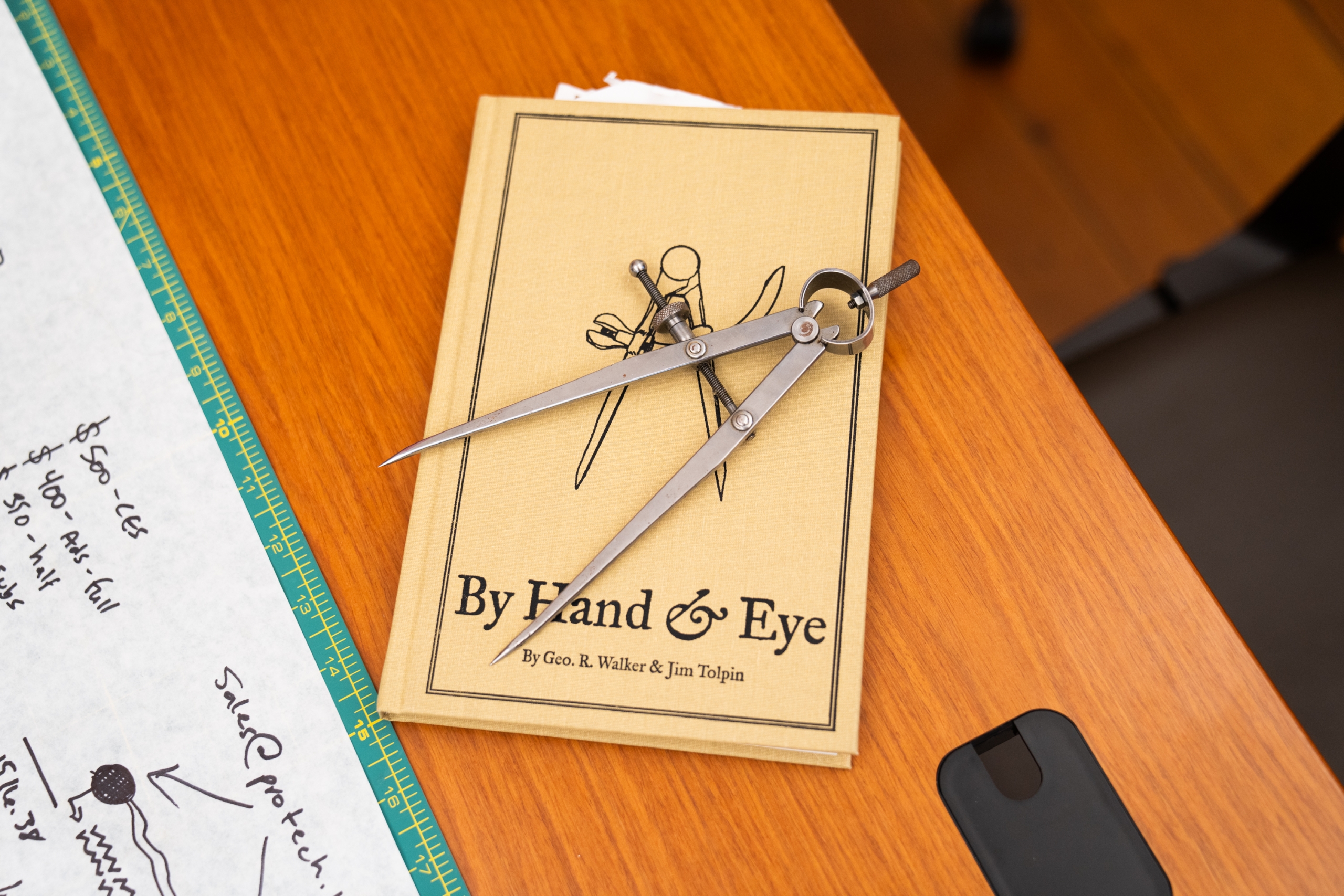
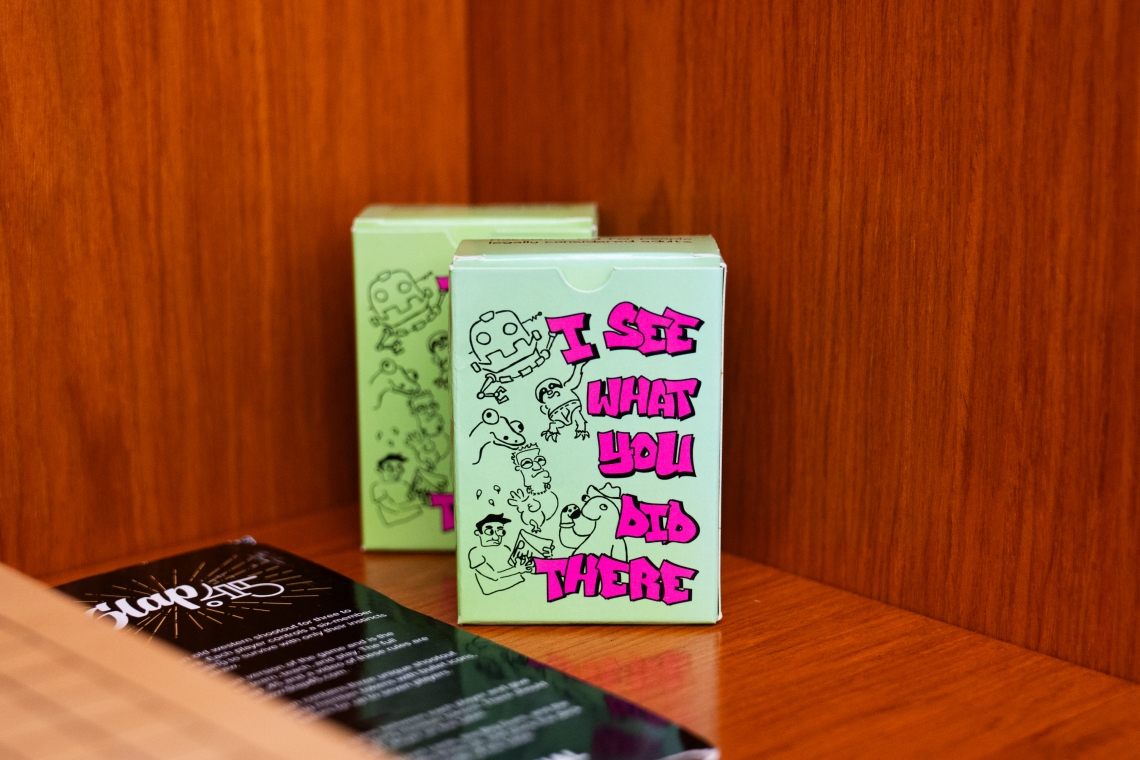 A game designed by a group of Margalus’ former students. He hopes to encourage W&L students to do more ideation that leads to tangible products.
A game designed by a group of Margalus’ former students. He hopes to encourage W&L students to do more ideation that leads to tangible products.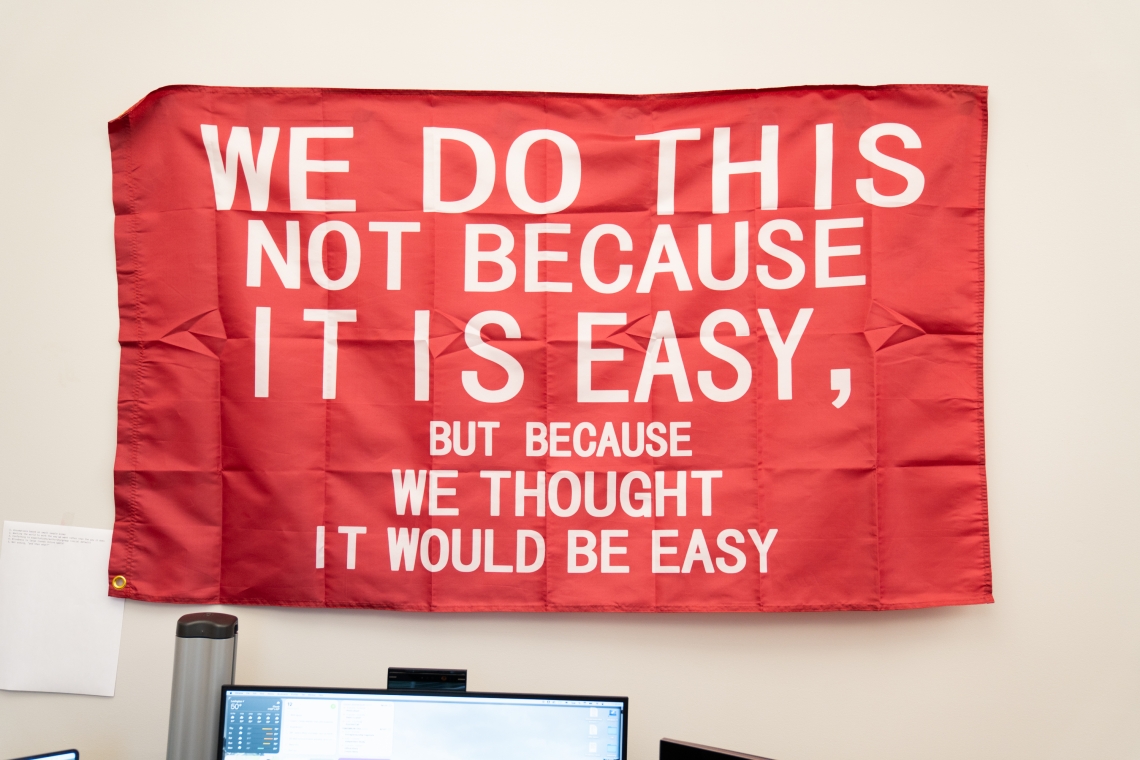 The banner above his desk is Margalus’ latest addition to his office.
The banner above his desk is Margalus’ latest addition to his office.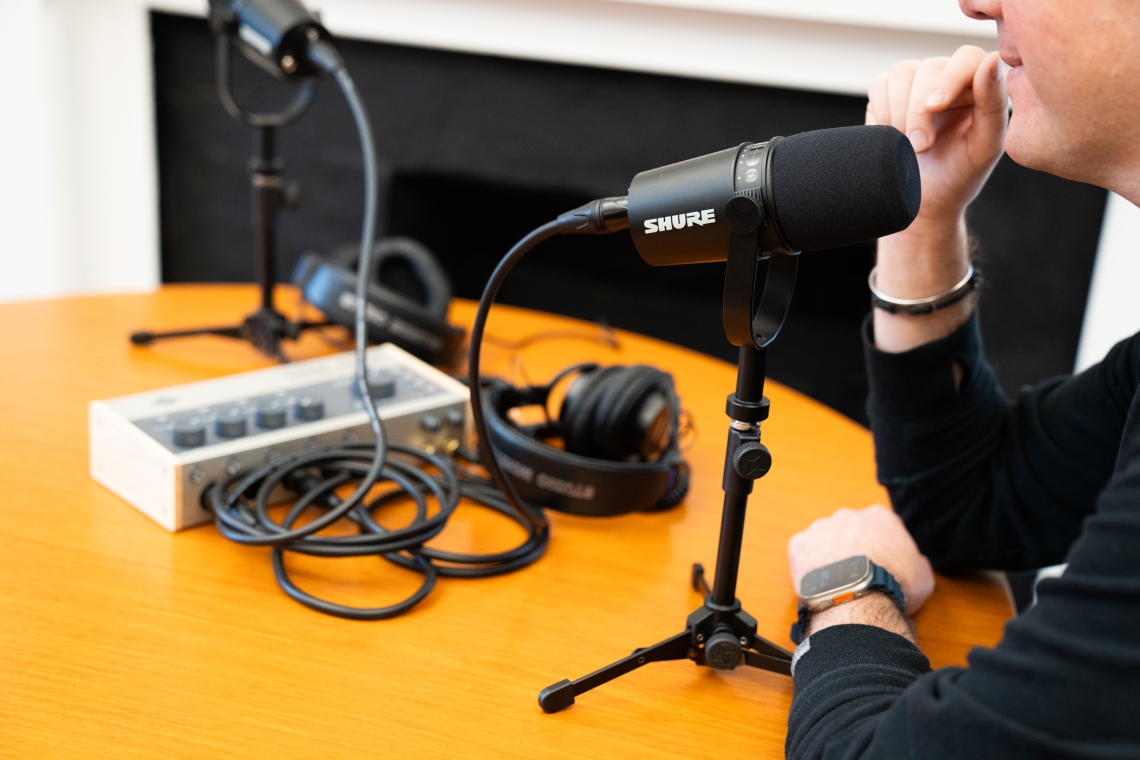 Margalus received a Lenfest Faculty Grant that allowed him to purchase podcasting equipment.
Margalus received a Lenfest Faculty Grant that allowed him to purchase podcasting equipment.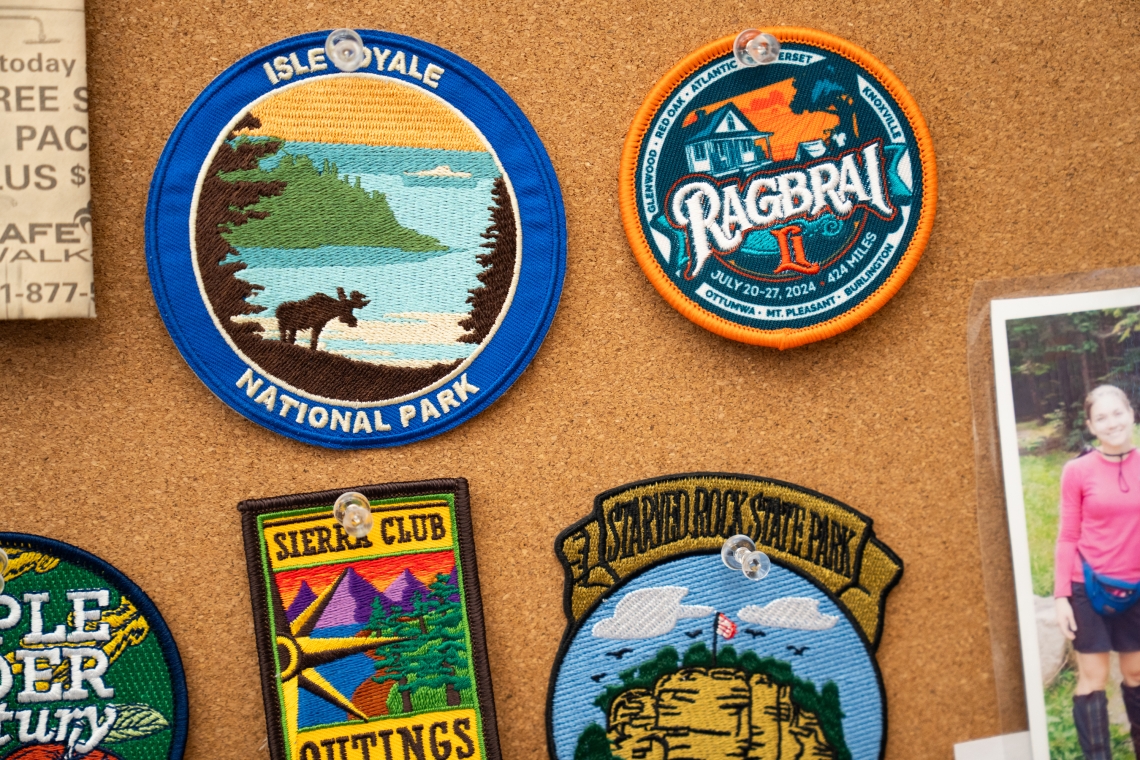 Margalus has multiple badges from his outdoor adventures and certifications.
Margalus has multiple badges from his outdoor adventures and certifications.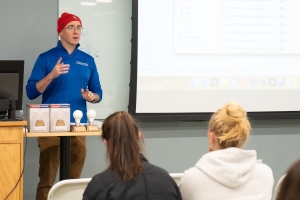

You must be logged in to post a comment.